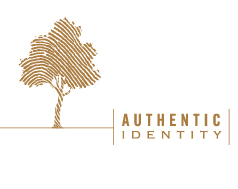How do you build a business that sustains for generations, adapts to constant change, remains fundamentally differentiated no matter how the competitive landscape shifts, and yet stays so clearly true to itself that it becomes an iconic brand?
The answer according to Sam Palmisano, the Chairman, President and Chief Executive Officer of IBM, lies in the organization’s identity. He credits it for IBM’s one hundred years of success.
“We have spent 100 years seeking to remain faithful to what makes us… us,” he says.
Palmisano recently gave a lecture at Johns Hopkins University, one of a series celebrating IBM’s centennial. In it, he cites the following quote from Tom Watson Jnr, son of IBM’s founder:
“I firmly believe that any organization, in order to survive and achieve success, must have a sound set of beliefs on which it premises all its policies and actions. Next, I believe that the most important single factor in corporate success is faithful adherence to those beliefs. And finally, I believe that if an organization is to meet the challenges of a changing world, it must be prepared to change everything about itself... except those beliefs… as it moves through corporate life.”
Watson was not talking about ethical principles, but about identity – the core beliefs and worldview that make an organization unique, authentic and resilient.
“For him, a company’s beliefs were about its identity - what makes it distinct… what shapes its decisions and behaviors. If you could codify and sustain that core, it would ensure that the company remained unique and differentiated… decade after decade,” says Palmisano.
One of our basic beliefs at Authentic Identity is that who you are determines how you create value. In our work with clients, we see that organizations with a clear identity are much better able to navigate through tumultuous change and still remain true to themselves.
IBM is a case in point. Over its 100-year history, the company has variously been a manufacturer of clocks, scales, cheese slicers, punched-card tabulators, typewriters, ATMs, mainframes, mini-computers, personal computers, supercomputers and software. It has gone from operating in one country to more than 170. On the way, it has become one of the world’s biggest providers of consulting services. Through all of that change, the company’s core identity provided a compass that kept the organization true to itself.
“It is a constant reminder never to define ourselves by the things we make, no matter how successful they are today,” says Palmisano. “Time has taught us how essential this balance is - between what changes and what endures… how it can go awry… and how we have to continually revisit it for new generations.”
You can read the complete text of Sam Palmisano’s lecture here.
How clear is your organization’s identity? Do you use it as a tool to shape how you develop people, ideas and customers? How do you manifest that identity in your behavior as a leader?


